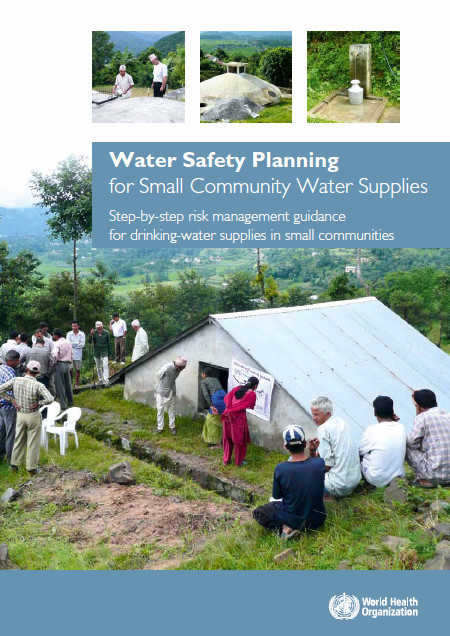Planifier la gestion de la sécurité sanitaire de l'eau pour l'approvisionnement en eau des petites communautés
 |
Water safety planning for small community water supplies
Step-by-step risk management guidance for drinking-water supplies in small communities
rapport Jun 2012 ; 66 pages
Ed. WHO - Genève ; Isbn: 978 92 4 154842 7
Téléchargeable sous format: PdF
Téléchargeable chez l'éditeur
Page de présentation d'un éditeur
Résumé:
Ce manuel a pour objet d’assurer la participation des communautés, de les rendre autonomes et de les guider dans l’élaboration et la mise en oeuvre de plans de gestion de la sécurité sanitaire de l’eau pour leurs réseaux d’eau de boisson.
Il présente des recommandations sur la façon de développer et de mettre en œuvre un PGSSE au moyen de 6 tâches réalisables. En suivant l'approche telle qu'elle est décrite dans ce manuel, les petites communautés peuvent améliorer la gestion de leur système d'approvisionnement et obtenir progressivement des améliorations durables de la qualité de l'eau potable. Abstract:
The WHO Guidelines for Drinking-water Quality recommends the application of a comprehensive risk assessment and risk management approach called Water Safety Plans (WSPs) to most effectively ensure the safety of drinking-water supplies. The WSP approach is systematic, comprehensive, cost-effective and appropriate in a wide range of circumstances and thus are an important tool for small community water supplies.
This manual is designed to engage, empower and guide communities in the WSP development and implementation process. Guidance is provided on how to develop and implement a WSP through six achievable tasks. By following the WSP approach as described in this manual, small communities can improve the management of their drinking-water systems to achieve incremental and sustainable improvements in their drinking-water quality. Contents:
What are small community water supplies, and why are they important?. 3
What is a water safety plan?. 4
Why should water safety plans be applied to small community water supplies?. 5
How can a water safety plan be developed and implemented in a small community water supply?. 6
Task 1 Engage the community and assemble a water safety plan team.8
Task 2 Describe the community water supply. 12
Task 3 Identify and assess hazards, hazardous events, risks and existing control measures. 17
Task 4 Develop and implement an incremental improvement plan.30
Task 5 Monitor control measures and verify the effectiveness of the water safety plan. 37
Task 6 Document, review and improve all aspects of water safety plan implementation. 43
Mots clefs: |
projet (montage, gestion) (CI) (DT) (OP) (ope) , sécurité (CI) (DT) (OP) (ope) |
Editeur/Diffuseur: |
|
WHO
-
World Health Organization - Genève - Suisse |
En cas de lien brisé, nous le mentionner à communication@pseau.org